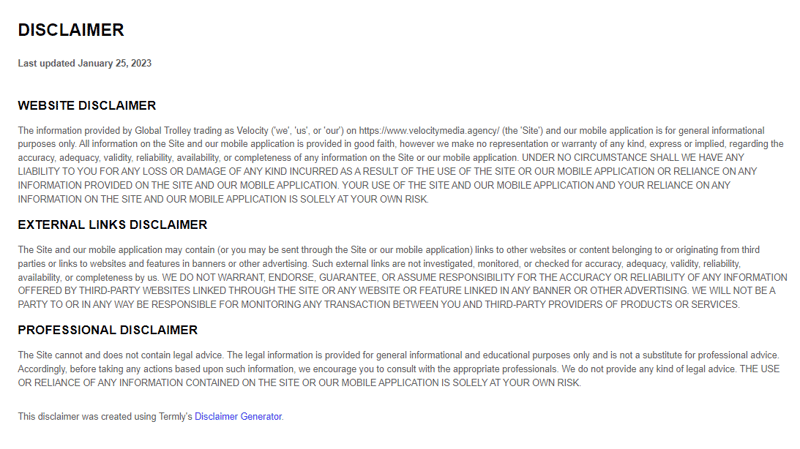Services List
To turn data into above-market growth, digital marketers must succeed in identifying valuable business opportunities by utilising analytics, turning those insights into well-designed products and offers, and delivering those products to the marketplace as effectively as possible. But the marketing landscape is changing. It is being shaped by government legislation and changing consumer behaviour. In this article, we look at the future marketing data at the hand of the abovementioned factors.
-3.png?width=2500&height=1500&name=Feature%20images%20velocity_%202500%20x%201500%20(11)-3.png)
Covered in this article
The Current State of Marketing Data Analytics
Building Stronger Data
A Microscopic Analysis of Consumer Beliefs
What's To Come For Marketing Data Analytics
The Current State of Marketing Data Analytics
Today’s marketing landscape requires marketers to understand the unique engagements of individuals across the entire marketing mix. In doing so, marketers will be able to meet the expectations of modern consumers, addressing their demand for relevancy, personalisation, and timeliness.
Using a unified marketing measurement strategy, marketers can tie together disparate measurement models like media mix modelling and digital attribution, into one cohesive view that provides the insights needed for the personalised marketing of today.
Outworn Tactics Lead To Evolution
As digital emerged as the predominant channel leveraged by marketers, the use of digital attribution models like multi-touch attribution offered marketers the means of quickly understanding the touchpoints and channels that played the most significant roles in driving revenue. Subsequently, this allowed marketers to optimise their campaigns by prioritising the channels that drove the highest engagement.
However, this method is flawed. Today’s revenue isn’t driven by digital marketing efforts alone, but instead, a combination of online media, offline media, and external factors that all influence consumers and prompt them to make a buying decision. To understand marketing efforts across these channels and optimize them to meet the expectations of today’s consumers, marketers need to do more—specifically, they need to adopt a unified marketing measurement strategy.
Unified Marketing Measurement Strategy
More and more companies are focusing on a highly advanced marketing analytics approach that combines the strengths of Marketing Mix Modeling (MMM) and Multi-Touch Attribution (MTA) and addresses their weaknesses.
This is where combining these two parts into a single strategy leads to a new chapter in marketing data analytics:
Unified Marketing Measurement (UMM) means bringing together two of the most critical components of marketing analysis2. This means Media or Marketing Mix Modeling (MMM) and Multi-Touch Attribution (MTA). Incidentally, UMM is also often referred to as Unified Marketing Impact Analytics (UMIA). The goal of UMM is not to apply MMM and MTA simultaneously. Rather, the aim is to create a uniform model for evaluating marketing effectiveness. Better still it is about giving marketers a holistic view with consistent data to get even closer to the so-called marketing truth. In concrete terms, this means that with UMM, the aggregated data from the Marketing Mix Modeling must be merged with the user-level data from the Multi-Touch Attribution.
Building Stronger Data
Going Mobile
According to a data.ai report3, the mobile-first economy has grown:
- More time than ever before is spent in mobile apps, reaching 4.8 hours per day in the top mobile-first markets.
- Consumers are migrating their attention and wallets to mobile as over $320,000 flowed through the app stores every minute of 2021, an increase of nearly 20% from previous records in 2020.
- Mobile services from both early adopters and mobile-forced players remain in high demand — with global consumers downloading over 435,000 apps per minute.
- Advertisers are taking note of the broad reach and deep engagement of mobile apps with mobile ad spending on track to hit $350 billion in 2022, after surpassing $295 in 2021.
With these facts and figures in the line, it is clear that mobile-centric marketing data collection will be prevalent in the future of marketing data. Leading marketers have started setting their sights on increasing their social media and other mobile marketing efforts.
Social media channels like Facebook, Instagram, and TikTok have made it easy for creators and marketers to analyse their content. The metrics pulled from social media platforms can give valuable insight into what works and what does not.
A Microscopic Analysis of Consumer Beliefs
When it comes to consumer-centric businesses, data analysis needs to reach further than just keeping an eye on sales records. According to a Mckinsey report4, qualitative, exploratory research will have a particular role to play as a precursor to quantitative research. Digital data-gathering and monitoring techniques—such as mobile diaries, social-media “listening,” and artificial-intelligence-driven message boards—will be vital tools to help companies understand emerging behaviours and contextual cues.
By adding structure to this, insights can lead to an updated approach that can be validated through larger-scale surveys and in-market testing. Companies can then refine their product offerings and marketing messages accordingly.

What's To Come For Marketing Data Analytics
People are consuming digital content on a daily basis. Very soon, traditional marketing platforms will disappear, and the digital market will completely take over. There are a number of advantages to Digital Marketing.
Goodbye to Third-Party Cookies
This cycle has been given a huge nudge by Google's plans to phase out third-party cookies completely - similar to the 2020 phase-out of Flash-based websites5 which was popular during the early 2010s. The death of third-party cookies has been on Google's to-do list for quite some time now and a line has been drawn in the sand. These trackers are set to phase out in Chrome by 2024.
As an alternative to reliance on third-party cookies, Google has been building the Privacy Sandbox. This initiative aims to both protect people's privacy online and give companies and developers tools to build thriving digital businesses. The Privacy Sandbox reduces cross-site and cross-app tracking while helping to keep online content and services free for all.
As part of the Privacy Sandbox, Google has introduced the new Topics API. This is a new proposal for cookie tracking. The algorithm works within a user’s browser and classifies them within high-level interest groups, such as fashion, food, or travel. This broad grouping can then be used for targeting.
The Prominence of First-Party Data
First-party data is data your company has collected directly from your audience, whether customers, site visitors, or social media followers. Essentially you or your business are the first parties that have collected unique information about your audience directly from your audience.
By analysing this data, marketers can get actionable insights for product placement and future marketing campaigns. But without AI and deep learning algorithms, marketing executives will struggle to interpret this data.
To Track or Not to Track
According to a New York Times article6, Apple released one of its most anticipated software updates for iPhones and iPads in 2021. This software, iOS 14.5, includes the App Tracking Transparency (ATT) privacy tool, which could provide users with more control over how their data is shared. Basically, when an app wants to follow a user's activities to share information with third parties like advertisers, a window requesting permission for such sharing of information pops up. The user then has to either approve or deny the request for monitoring and sharing of their data.
While this appears to be a simple solution to keeping data private, the question remains of how effective this is. Ad-tech companies have found workarounds and can use a method called fingerprinting - where seemingly harmless characteristics of a user's device (like screen resolution, operating system version and model) can be checked and combined to determine the user's identity and tracked across different apps.
A new study by the University of Oxford7 in 2022 reported that, while ATT was largely living up to Apple's privacy claims, it simply motivated advertisers to find tracking solutions that cannot be stopped. The study further concluded that there appears to be a trade-off between increased levels of privacy and more concentration of data collection with fewer tech entities - by shifting tracking code onto the servers of dominant tracking companies.
The Way Forward
As the marketing landscape evolves, so does the customer expectation paradigm. As marketers respond to today’s evolving landscape and consumer trends, the measurements and analytics they use to optimise their efforts need to grow in tandem.
With this in mind, they must move away from older models alone, and embrace unified marketing measurement. Made possible through a modern marketing analytics platform, this ensures marketing efforts stay ahead of landscape shifts while meeting the expectations of today’s consumers.
References
[1] Understanding and shaping consumer behavior in the next normal, McKinsey & Company, 24 July 2020
[2] Introducing Unified Marketing Impact Analytics, Forrester, 6 October 2015
[3] The State of Mobile in 2022: How to Succeed in a Mobile-First World As Consumers Spend 3.8 Trillion Hours on Mobile Devices, data.ai, 12 January 2022
[4] Understanding and shaping consumer behavior in the next normal, McKinsey & Company, 24 July 2020
[5]Saying goodbye to Flash in Chrome, Google, 25 July 2017
[6] To Be Tracked of Not? Apple Is Now Giving Us the Choice, New York Times, 29 September 2021
[7] Apple's anti-tracking tech is mostly working, but it can't block everything, Apple Insider, 19 May 2022






